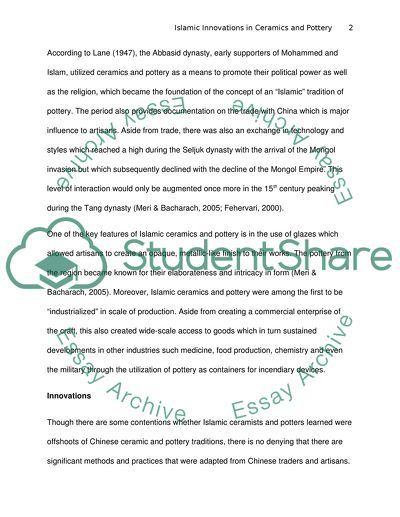Cite this document
(Islamic Ceramics Traditions Report Example | Topics and Well Written Essays - 1500 words, n.d.)
Islamic Ceramics Traditions Report Example | Topics and Well Written Essays - 1500 words. https://studentshare.org/culture/1555790-islamic-ceramics
Islamic Ceramics Traditions Report Example | Topics and Well Written Essays - 1500 words. https://studentshare.org/culture/1555790-islamic-ceramics
(Islamic Ceramics Traditions Report Example | Topics and Well Written Essays - 1500 Words)
Islamic Ceramics Traditions Report Example | Topics and Well Written Essays - 1500 Words. https://studentshare.org/culture/1555790-islamic-ceramics.
Islamic Ceramics Traditions Report Example | Topics and Well Written Essays - 1500 Words. https://studentshare.org/culture/1555790-islamic-ceramics.
“Islamic Ceramics Traditions Report Example | Topics and Well Written Essays - 1500 Words”. https://studentshare.org/culture/1555790-islamic-ceramics.


